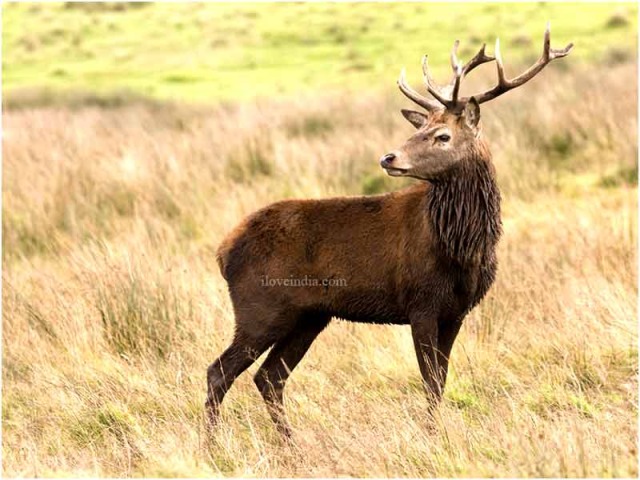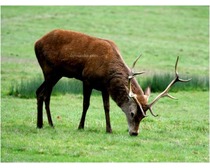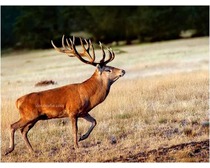One of largest deer species, the Red Deer inhabits many regions across the world. Explore the article to know more interesting facts and amazing information on Red Deer.
Facts About Red Deer
Red deer can be described as a ruminant that eats its food in two stages and has an even number of toes on each foot, just as camels, goats and cattle have. The different species of the deer vary and differ in size, color and antlers. As compared to the Asian and North American Red Deer, the European one has a relatively longer tail. While the smallest of the deer species is Corsican Red Deer, the largest is the Caspian Red Deer. Red deer is known for its proud bearing and magnificent antlers that can be as long as 36 inches. In the United Kingdom, the reintroduction and conservation efforts have shown an increase in the Red deer population, while areas like North Africa have shown a decline in their number. To know some more interesting facts and amazing information on Red deer, do read on.

Facts About Red Deer
Kingdom: Animalia
Phylum: Chordata
Class: Mammalia
Order: Artiodactyla
Suborder: Ruminantia
Family: Cervidae
Subfamily: Cervinae
Genus: Cervus
Species: C. elaphus
Height: Male: 69-91 inches, Female: 63-83 inches
Weight: Male: 350-530 lb, Female: 260-370 lb
Lifespan: 20 years
Diet: Grass and other plants in open prairies, leaves and fresh shoots in woods.
Habitat: Grasslands, woodlands and upland moors.
Age of Sexual Maturity: 18 months
Gestation Period: 240-262 days
Number of Offspring: One every year
Interesting & Amazing Information On Red Deer
- Red deer inhabits most parts of Europe, the Caucasus Mountain region, Asia Minor and parts of western and central Asia, Atlas Mountains region between Morocco and Tunisia in northwestern Africa. The deer is also found in Australia, New Zealand and Argentina.
- The animal is the largest non-domesticated mammal that exists in European countries, like the United Kingdom and Ireland.
- The male Red deer is called a stag or hart, while the female Red deer is known as a hind.
- Since male deer have stronger and thicker neck muscles, as compared to the females, they appear to have neck manes.
- Red deer feeds on shrubs, tree browses, grasses, sedges, rushes and heather.
- Only the stag has antlers that grow in spring and are shed every year, at the end of winter.
- The antlers of Red deer are mage up of bones and have the tendency to grow at a rate of 2.5 cm (1.0 inch) per day. The newly forming antlers are protected by a soft, furry covering called velvet.
- Based on the seasons and types of habitats, Red deer are known to have different coloration, varying from grey or light coloration in winters to reddish and dark coat in the summers
- Caspian Red Deer’s coat is grey in winter, with a large and distinguished light rump-patch while the West European Deer can be seen in a grayish-brown coat, with a dark yellowish rump patch.
- In Europe, the deer spend their winters in lower altitudes and more wooden terrains, while in summers; they migrate to higher elevations, in search of food for the calving season.
- The young Red deer, known as fawn, is born during autumn and has a white spotted coat on birth, which changes to a dark brown, fluffy one after the summer season.
- Red deer is capable of producing 10 to 15 kg of velvet annually. This velvet is collected and sold in markets, as it is used for holistic medicines.


See also
More from iloveindia.com
- Home Remedies | Ayurveda | Vastu | Yoga | Feng Shui | Tattoos | Fitness | Garden | Nutrition | Parenting | Bikes | Cars | Baby Care | Indian Weddings | Festivals | Party ideas | Horoscope 2015 | Pets | Finance | Figures of Speech | Hotels in India : Delhi | Hyderabad | Chennai | Mumbai | Kolkata | Bangalore | Ahmedabad | Jaipur
- Contact Us Careers Disclaimer Privacy Policy Advertise With Us Lifestyle Sitemap Copyright iloveindia.com. All Rights Reserved.





